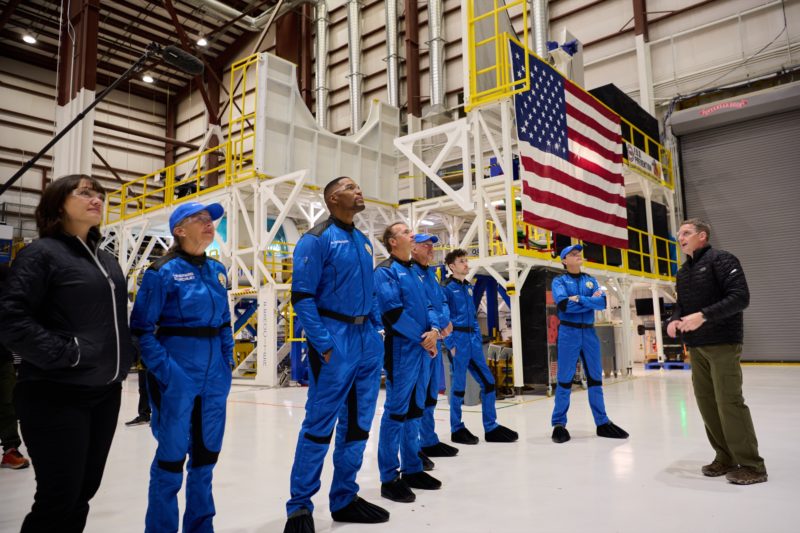
Six humans crossed the 62-mile-high (100 km) “Kármán Line” for the first time since the end of the Space Shuttle Program early Saturday, as Blue Origin’s venerable New Shepard booster smoothly executed its third crew-carrying flight of the year. Carrying “customers” Dylan Taylor, Evan Dick and father-and-son duo Lane and Cameron Bess, plus a pair of “guests”, Good Morning America (GMA) co-anchor Michael Strahan and Laura Shepard-Churchley—daughter of Al Shepard, America’s first man in space and New Shepard’s namesake—the sextet took flight from desolate Launch Site One in the West Texas desert at 9:00:42 a.m. CST.
Today’s flight lasted ten minutes and saw New Shepard reach a peak altitude of 347,231 feet (equivalent to 65.76 miles or 105.83 kilometers), whilst the Crew Capsule attained 347,580 feet (equivalent to 65.82 miles or 105.94 kilometers) at the top of its suborbital “arc”, before returning safely back to Earth.
“We had a great flight today. This was our sixth flight in what has been a great year for the New Shepard program. We flew 14 astronauts to space, flew a NASA payload flight that tested lunar landing sensors and completed our certification test flights,” said Blue Origin CEO Bob Smith.
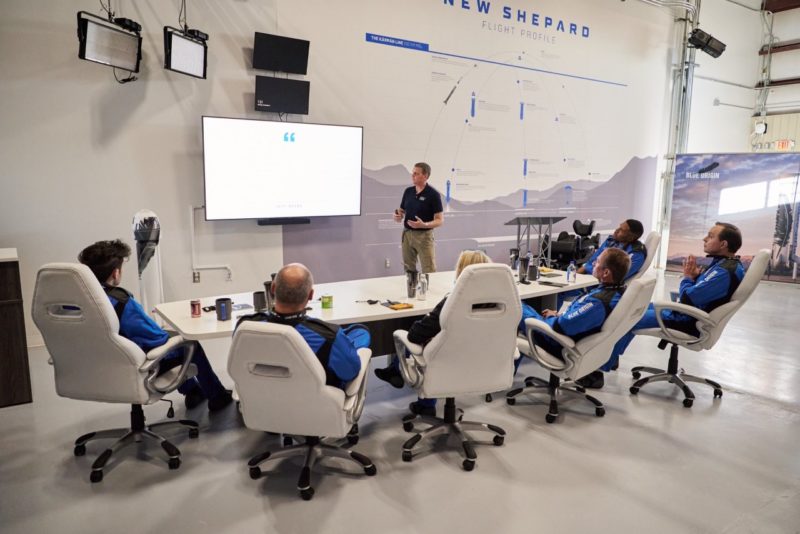
“I want to thank our payload customers, our astronauts and, of course, Team Blue for these many important accomplishments. I am so proud to be part of this dedicated and hard-working team that ensures that each and every flight of New Shepard is safe and reliable. And it’s fun to say that this is just the beginning.”
Blue Origin has now pushed the number of humans launched via New Shepard into double figures, following the historic flight of founder Jeff Bezos, his brother Mark, teenager Oliver Daemen and 82-year-old “Mercury 13” aviator Wally Funk last 20 July. In doing so, the flight (NS-16) saw the youngest and oldest people in history to be lifted beyond the Kármán Line, the altitude which is almost universally recognized as the “edge” of space.
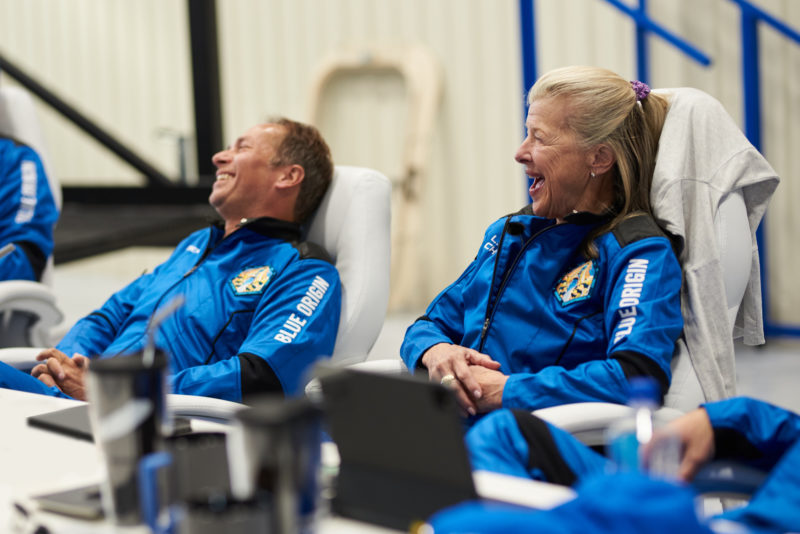
More recently, on 13 October, a second crewed launch (NS-18) carried Blue’s vice president of mission and flight operations, Audrey Powers, together with Star Trek veteran William Shatner—“Captain Kirk” himself—and entrepreneurs Chris Boshuizen and Glen de Vries. Triumph, however, was harshly juxtaposed with tragedy, when de Vries sadly lost his life a few weeks later in a light aircraft accident.
The NS-19 flight patch, bearing the surnames of today’s six stellar flyers, bore a touching tribute in the form of de Vries’ initials: GDV. “We are devastated to hear of the sudden passing of Glen de Vries,” Blue tweeted on 12 November, a few hours after the 49-year-old’s death.
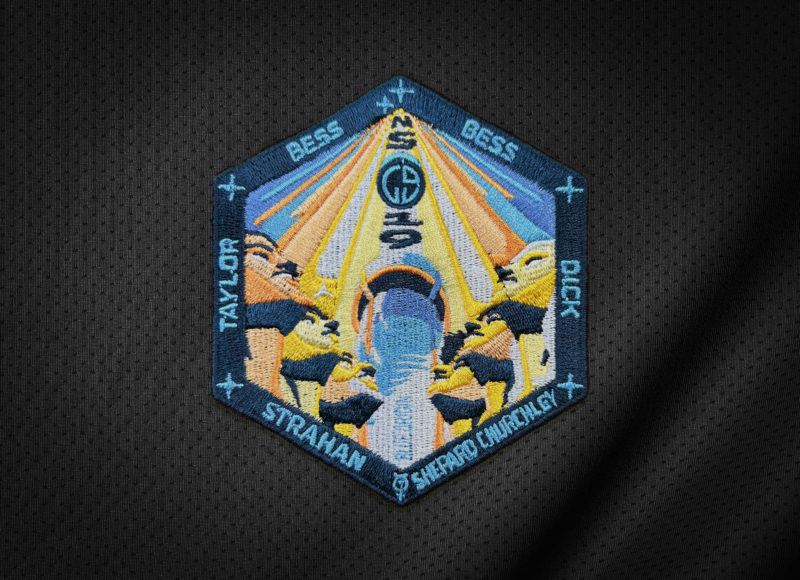
“He brought so much life and energy to the entire Blue Origin team and to his fellow crewmates. His passion for aviation, his charitable work and his dedication to his craft will long be revered and admired.”
Less than two weeks after de Vries’ passing, on 23 November Blue formally announced the crew for NS-19. Philanthropist and CEO of the NewSpace firm Voyager Space Dylan Taylor, engineer and investor Evan Dick and founder of the Bess Ventures technology organization Lane Bess, together with his son, Cameron, were accompanied by GMA co-anchor and Emmy Award-winning journalist Michael Strahan and Laura Shepard Churchley, chair of the Astronaut Scholarship Foundation (ASF) Board of Trustees.
And on launch morning, as Shepard Churchley walked to the pad, she cannot have failed to notice her father’s famous words—“Light This Candle”—on the crew access gantry. Offering a nod to Shepard’s memory and the “Original Seven” Project Mercury astronauts, the NS-19 crew wryly dubbed themselves “The Original Six”.
Launch was originally set for Thursday, but was pushed back to Saturday, on account of predicted out-of-tolerance winds in the West Texas desert. In the meantime, the Flight Readiness Review (FRR) was completed, with weather identified as “the only gating factor to get to launch”. Flying today’s mission was the NS4 booster, logging its fifth launch after its introduction to the New Shepard fleet last January.
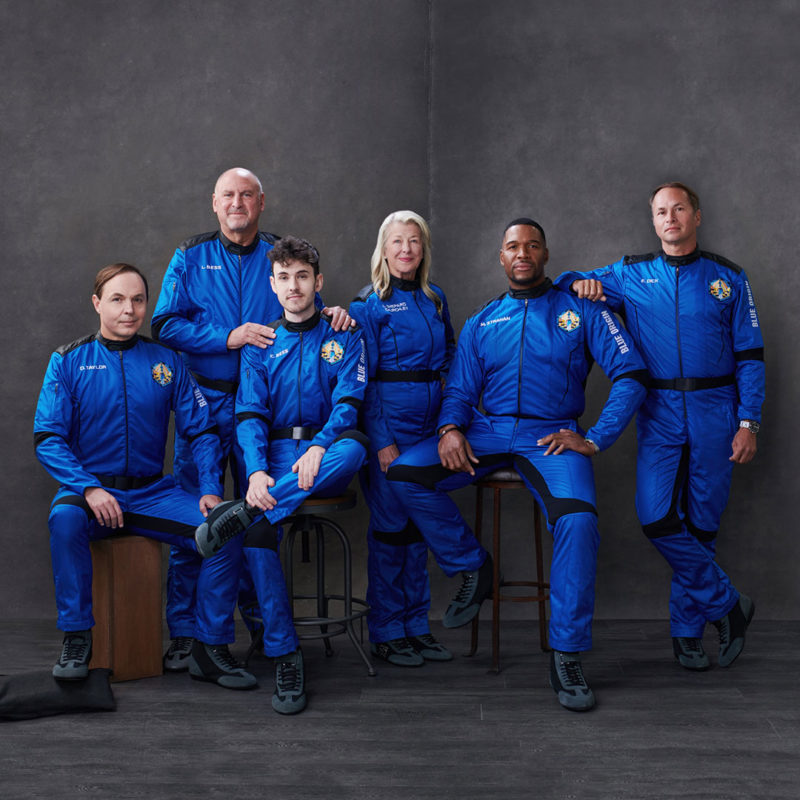
On its first outing, NS4 trialed speakers, microphones, a crew alert system and push-to-talk buttons, as well as cushioned wall-linings and sound suppression equipment. She flew again in mid-April, during which crew members rehearsed pre-launch ingress and post-launch egress procedures. But the real deal for NS4 came in July and October, when she lifted a total of eight humans past the Kármán Line, with 90-year-old Shatner eclipsing Funk as the oldest person to reach space.
With today’s flight, NS-19 marked the first time since STS-134—shuttle Endeavour’s swansong mission in May 2011—that as many as six people had been launched beyond the Kármán Line on a single spacecraft.
The 59-foot-tall (18-meter) NS4 booster was transported the two miles (3.2 kilometers) from the assembly facility—nicknamed “The Barn”—out to Launch Site One, about 7.5 hours prior to liftoff. The process of loading liquid oxygen and hydrogen propellants got underway at T-3 hours. And shortly after T-45 minutes, Taylor, Dick, Shepard Churchley, Strahan and the Besses boarded their Rivian trucks for the trip to the pad.
Clad in their bright blue flight suits, they ascended four sets of stairs to the top of the gantry, where the Tower Operations Team and Crew Member No. 7 Kevin Sproge assisted them with ingress and strap-in protocols. The hatch of the Crew Capsule was closed at T-24 minutes.
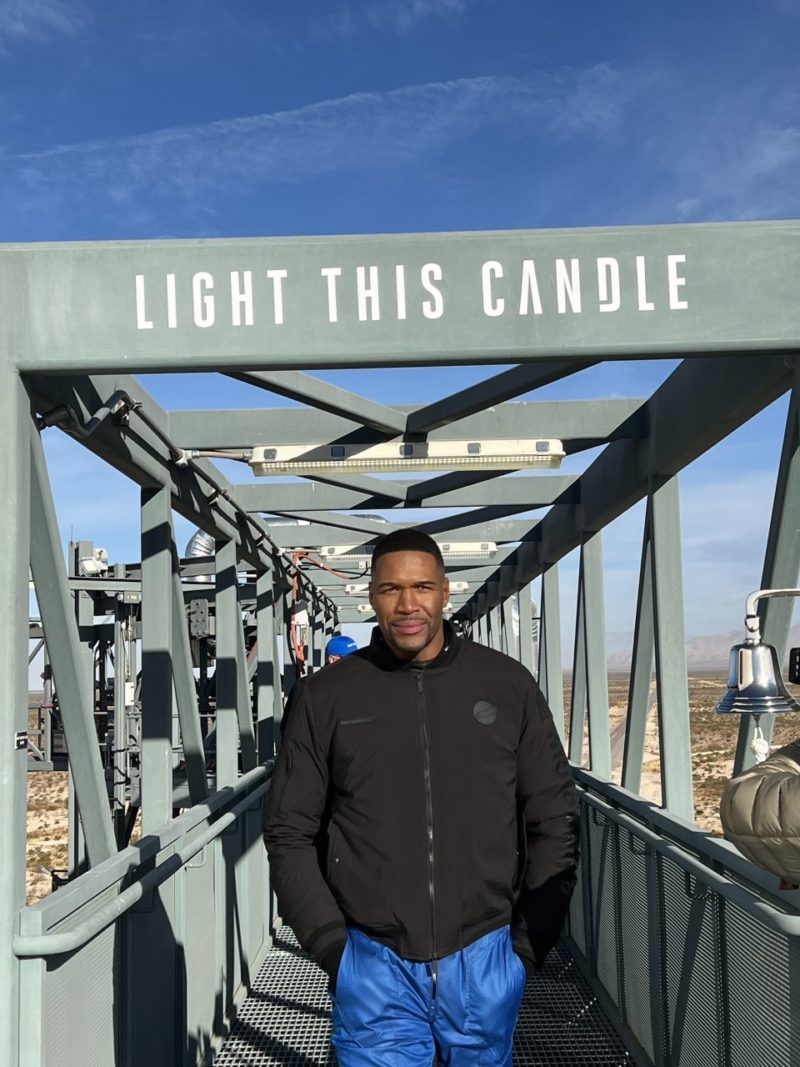
“We dedicate the #NS19 flight to the memory of Glen de Vries,” tweeted Blue. “His passion and dedication will not be forgotten. #AdAstra Glen.”
After a brief hold at T-15 minutes, the clock resumed counting and Mission Control issued its Terminal Count Ready Report at T-10 minutes. The final “Go/No-Go” poll was issued at 8:52 a.m. CDT.
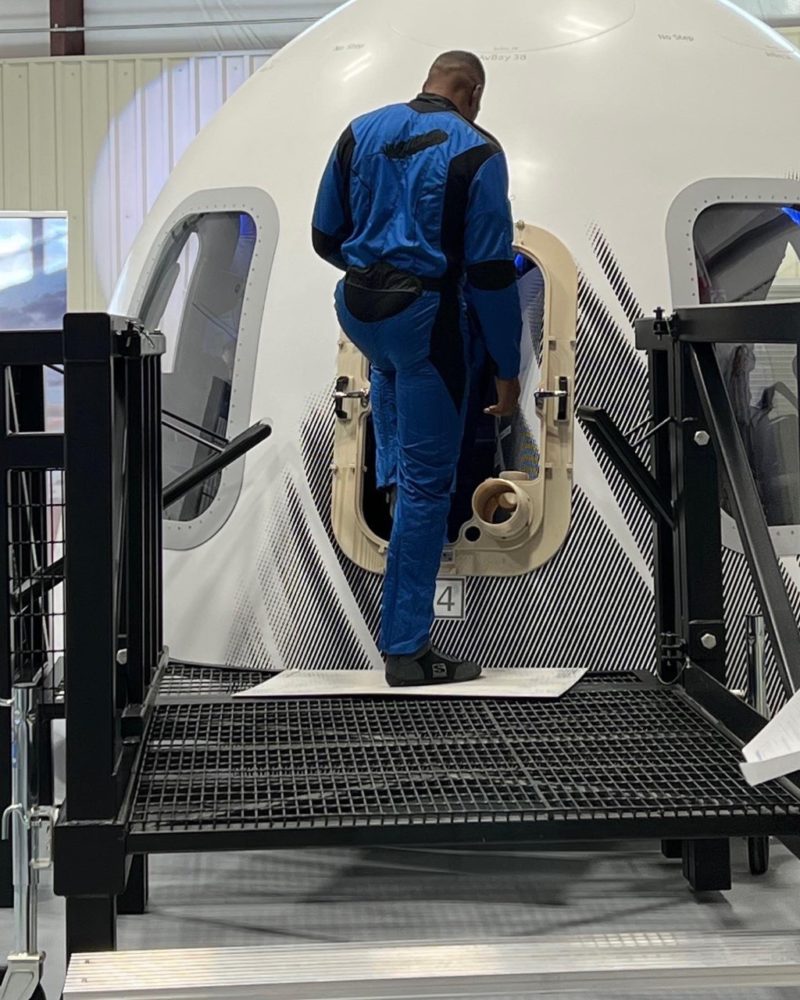
The gantry retracted away from the vehicle at T-2 minutes and a surprisingly quiet countdown was suddenly broken by the transition to Internal Guidance at T-16 seconds and the call to “Command Engine Start” at T-4 seconds. With a thrust of 110,000 pounds (50,000 kilograms), New Shepard’s powerful BE-3 engine roared to life and commenced a fast climb away from the West Texas desert.
The vehicle passed “Max Q”, the phase of maximum aerodynamic turbulence on the airframe, about 50 seconds later and the BE-3 shut down at two minutes and 20 seconds, by which time the stack had reached an altitude of just over 200,000 feet, equivalent to more than 37 miles or 60 kilometers.
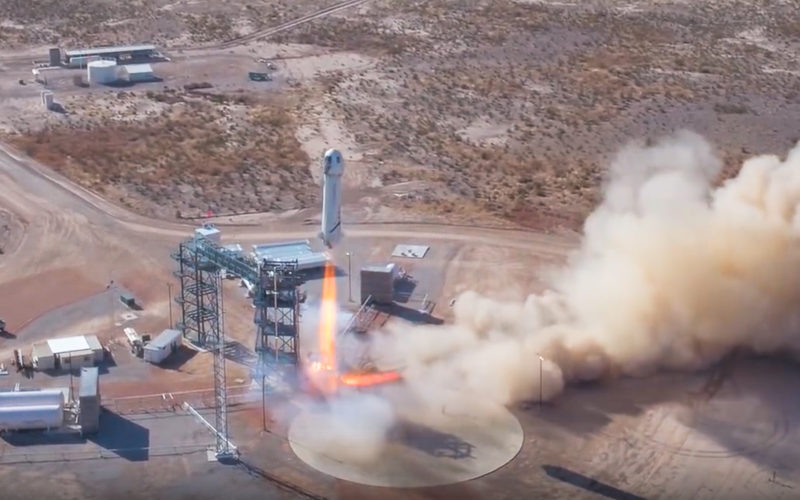
Shortly afterwards, NS4 and the Crew Capsule parted company and the booster began its descent back to Earth, announcing its arrival with a trademark sonic boom, then touching down smoothly on its landing pad at seven minutes and 25 seconds.
Meanwhile, the Crew Capsule continued to coast upwards to an apogee of 347,580 feet (equivalent to 65.82 miles or 105.94 kilometers). Taylor, Dick, Shepard Churchley, Strahan and the Besses logged roughly three to four minutes of weightlessness before heading back home.
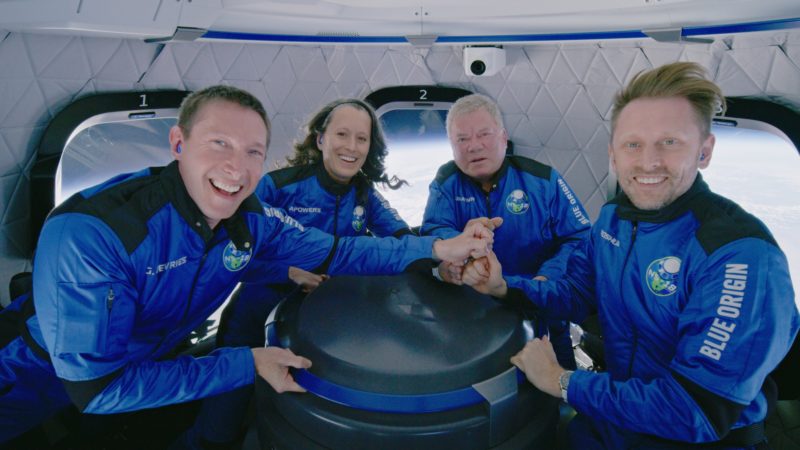
When one listens to the live feed, their excitement was evident—“Check this out!” remarked one, “Oh, my gosh” retorted another—as the number of humans sent into space by Blue in 2021 went into double figures.
Descending beneath three beautiful red-and-blue parachutes, the Crew Capsule touched down at 9:10:55 a.m. CST at T+10 minutes and 13 seconds. Peak ascent velocity was 2,244 miles per hour (3,611 kilometers per hour). “We did it!” yelled one, in the final seconds before the thump of touchdown. “I can see the chutes,” another helpfully offered.
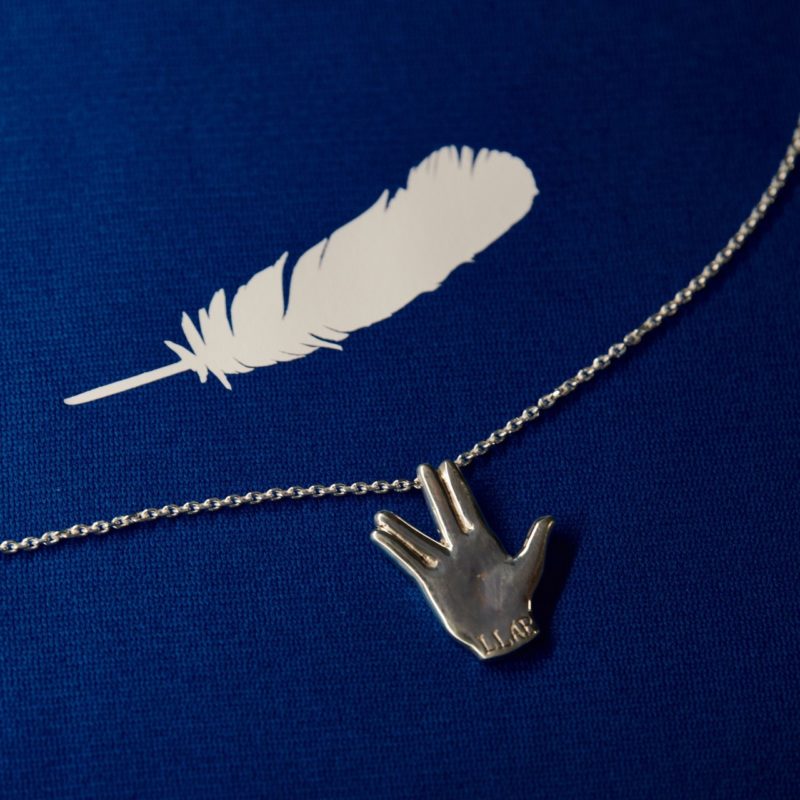
In addition to six humans, the Crew Capsule also carried a particularly poignant object in the form of a pendant, which pays tribute to the late actor Leonard Nimoy, who played Star Trek’s Spock for almost five decades, until shortly before his death in 2015. “It represents a message he strongly believed in,” tweeted Blue of the significance of the pendant, “that each of us lives a long and healthy life, with a vision of the future for peace, tolerance and unity.”
With today’s flight, 2021 closes out a banner year for Blue, with a personal-best-beating six launches. In addition to five missions by NS4—three of which carried human passengers—her sister New Shepard vehicle, NS3, executed the uncrewed NS-17 flight in August, whose payload included postcards, lunar landing technology and artwork.




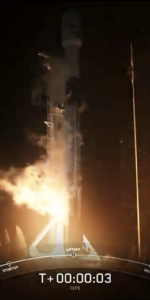
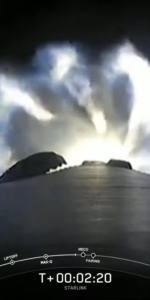
2 Comments
2 Pings & Trackbacks
Pingback:NS-20 New Shepard Launches, Delivers Six Crew to Edge of Space - AmericaSpace
Pingback:NS-21 Launches Six Humans to Space, Including New Shepard’s First Repeat Flyer - AmericaSpace